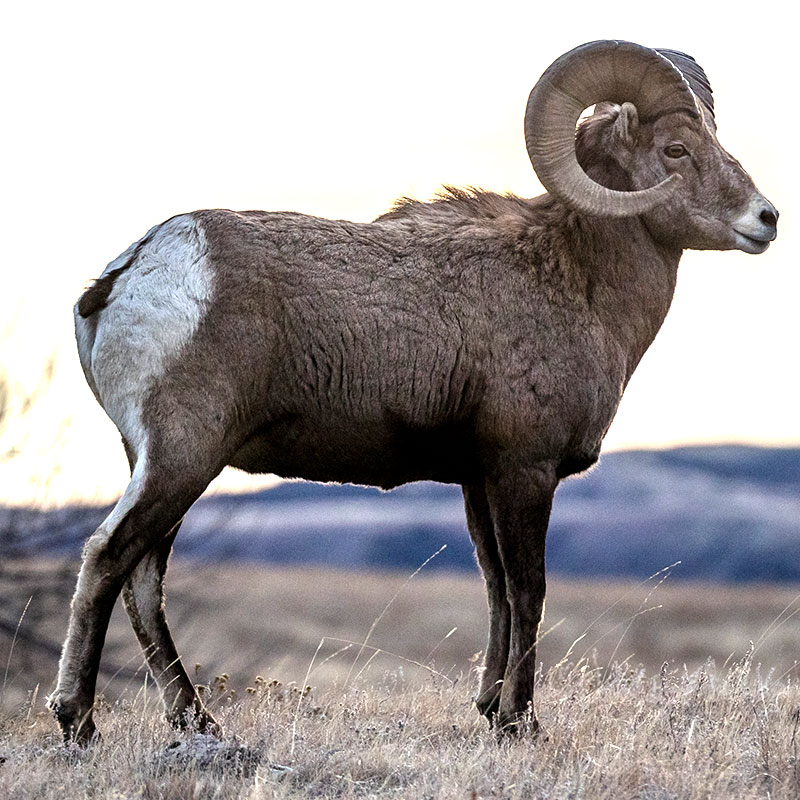
BISMARCK, N.D. (G&F) – The North Dakota Game and Fish Department’s 2021 bighorn sheep survey, completed by recounting lambs in March, revealed a record 335 bighorn sheep in western North Dakota, up 4% from 2020 and 15% above the five-year average.
The count surpassed the previous record of 322 bighorns in 2020.
Altogether, biologists counted 99 rams, 175 ewes and 61 lambs. Not included are approximately 40 bighorn sheep in the North Unit of Theodore Roosevelt National Park and bighorns introduced to the Fort Berthold Indian Reservation in 2020.
Big game biologist Brett Wiedmann was pleased to see an increase in the survey for the fourth consecutive year.
The northern badlands population increased 6% from 2020 and was the highest count on record. The southern badlands population declined again to the lowest level since bighorns were reintroduced there in 1966.
“We were encouraged to see the count of adult rams increase to near record levels, and adult ewes were at record numbers,” Wiedmann said. “Most encouraging was a record lamb count corresponding with a record recruitment rate.”
Department biologists count and classify all bighorn sheep in late summer, and then recount lambs the following March as they approach one year of age to determine recruitment.
Department staff, in conjunction with biologists from the Three Affiliated Tribes Fish and Wildlife Division, also reported the bighorn sheep translocated in January 2020 from Rocky Boy’s Reservation in Montana to the Fort Berthold Reservation performed exceptionally well their second year in the state. The population has nearly doubled in just two years, which is exceptional population performance for bighorn sheep.
There are currently almost 450 bighorn sheep among populations managed by the North Dakota Game and Fish Department, the National Park Service and the Three Affiliated Tribes Fish and Wildlife Division. Wiedmann said the next benchmark is 500 bighorns in the state, which seemed improbable just a few years ago.
Dr. Charlie Bahnson, Game and Fish veterinarian, added that although the Department was pleased to see a low prevalence rate of Mycoplasma during last winter’s disease monitoring of bighorn sheep, biologists did observe several bighorns coughing during the 2021 survey, which indicates the population has not completely cleared the deadly pathogen first documented in 2014.
A bighorn sheep hunting season is tentatively scheduled to open in 2022.The status of the season will be determined Sept. 1, following the summer population survey.
Game and Fish issued five licenses in 2021 and four hunters were successful in harvesting a ram.
